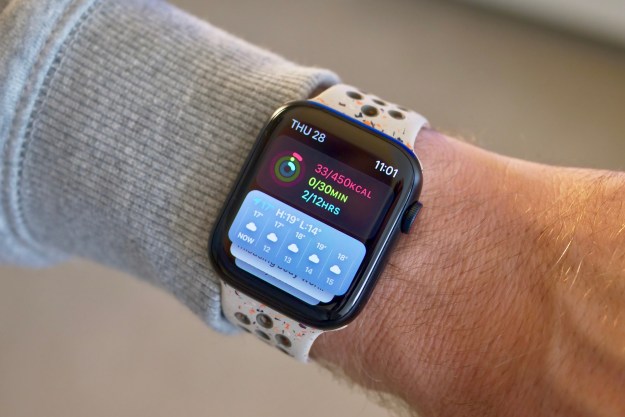Hyundai drivers can now control their cars using an Apple Watch version of the Blue Link smartwatch app unveiled earlier this year. It’s the latest in a growing number of automotive apps for wearable devices.
The Blue Link app was first shown at CES back in January for Android, but is available as a free download in the Apple App Store as of today.
The app’s features are unchanged, and include remote engine start/stop, remote door lock/unlock, the ability to flash the lights or honk the horn, a car finder, and a status feature that includes maintenance reminders.
Most of these features can be accessed using voice control. After tapping the microphone icon, the driver can use somewhat colloquial commands like “start my car,” “lock my car,” or “find my car” to activate specific functions.
Like the previously seen Android version, the Apple Watch version of the app works with both generations of Hyundai’s Blue Link system, which uses a cloud-based platform to back both smartphone and smartwatch apps, as well as in-car infotainment systems.
The first generation of Blue Link launched on the 2012 Sonata and was rolled out on most other Hyundai models beginning in 2013. The second-generation system was unveiled last year, and is currently available on the 2015 Genesis, Sonata, and Azera sedans.
Other carmakers, such as BMW and Porsche, are also marketing smartwatch apps, but Hyundai is offering one on mainstream models priced below expensive luxury cars.
As carmakers continue to explore connectivity as a way to attract device-obsessed customers and appear a part of the technological zeitgeist, smartwatches appear to be the next big thing.
There are already a wealth of connectivity options for smartphones, from car-specific apps to systems that project smartphone functions onto a car’s built-in displays and controls. Adapting all of that to smartwatches seems like the next logical step.
Editors' Recommendations
- I keep forgetting about the Apple Watch Series 9’s coolest feature
- Nomad’s new iPhone case and Apple Watch band may be its coolest yet
- Everything you need to know about the massive Apple App Store outage
- Everything Apple says is wrong about the DOJ’s iPhone lawsuit
- Apple may stop updating one of its best Apple Watches this year


